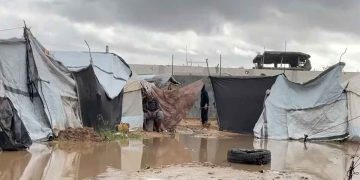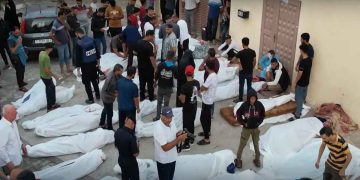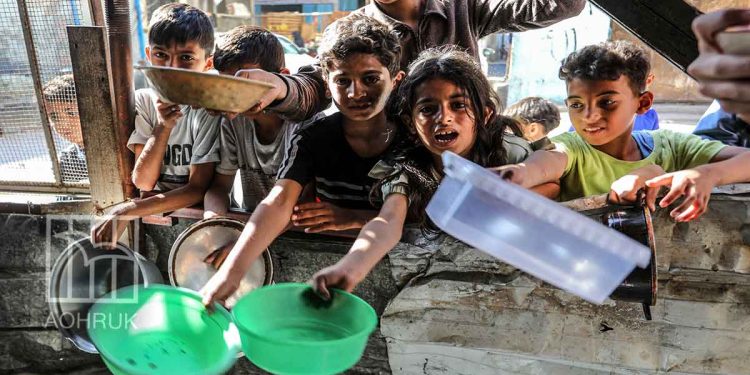Gaza is facing an unprecedented humanitarian disaster, which reached its peak with warnings from the United Nations Relief and Works Agency for Palestine Refugees (UNRWA) of critical levels of hunger that have forced residents to search for food in the waste.
This warning comes amid the ongoing Israeli war of extermination since October 7, 2023, which has killed and wounded tens of thousands, and led to widespread destruction of infrastructure and homes, making survival in the Strip almost impossible.
Systematic siege and starvation
The population of the Strip, numbering more than two million people, has been living under a stifling Israeli siege for more than 16 years, which has worsened with the recent war that has been ongoing for about 14 months.
Coinciding with the start of the war, the occupation closed almost all commercial and humanitarian crossings, preventing the entry of food, medical supplies and fuel, which led to the depletion of food stocks in stores and warehouses, and a significant increase in malnutrition rates, especially among children.
According to UN and international reports; More than 80% of Gaza’s population suffers from food insecurity, while access to the minimum daily needs has become a distant dream.
UNRWA confirms that the scarcity of food has led to the spread of famine among children and the elderly, as dozens have died due to severe malnutrition.
In light of the destruction of the agricultural sector due to Israeli bombing and the prevention of supplies from reaching them, families are now relying on the minimum amount of humanitarian aid, which only arrives in a limited and slow manner.
In the same context, the bombing has destroyed water and sewage networks, leading more than 90% of the population of the Strip to rely on unsafe water, which has increased the spread of diseases and malnutrition.
The severe food shortage has exacerbated malnutrition, as thousands, especially children, suffer from a deficiency in essential vitamins and minerals, which exposes them to the risk of chronic diseases.
Medical reports have indicated that the death rate among children due to hunger and related diseases, such as diarrhea and digestive system diseases, has risen to unprecedented levels.
The failure of the international community
Despite the scale of the humanitarian disaster in Gaza; The international community’s position remained meaningless. The United Nations and international organizations issued statements warning of an unprecedented catastrophe, and called for the opening of safe corridors and the entry of aid, however all their efforts failed due to the intransigence of the Israeli occupation.
As for the UN Security Council, which could have issued solutions resolving the crisis, it once again demonstrated its impotence due to the use of veto power by some major countries to support the Israeli occupation, which prevented the issuance of binding resolutions.
On the international level, there were limited calls for a ceasefire, but they lacked effective implementation mechanisms, leaving civilians in Gaza to suffer without protection or relief.
The double standards of the international community were clearly evident, as the major powers dealt with the crisis based on political interests, instead of adhering to international humanitarian law, which further exacerbated the situation.
Hunger and famine in Gaza are a direct result of the policies of the Israeli occupation, which contradict the rules of international humanitarian law, especially the Geneva Conventions, which prohibit the starvation of civilians as a means of war. This requires the international community, especially the United Nations and the Human Rights Council, to take immediate action to end the siege, stop the war, and open an international investigation into the crimes committed by the occupation.





























